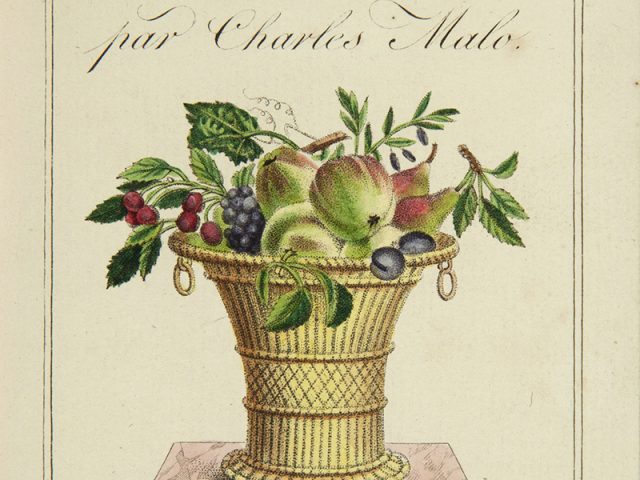
Les Fleurs
In early Nineteenth century France, historical developments affected the appeal and popularity of flowers, gardens, their symbolic value, and their place in society. The rise of the middle class placed new demands on urban spaces in Paris. The previous urban gardens owned by royalty were made available as public spaces, for example the gardens at the Tuileries, Luxembourg, and Palais Royal, allowing the “cult of flowers” in bourgeois popular culture the spaces to enjoy nature in the city. These developments can also be found in the literature and printing industry of the time. With 19th century technological developments in printing, especially the printing of illustrations and images with greater detail, the rise of illustrated magazines and books met the reading demand of the middle class. Among these newly popular publications were flower dictionaries, collections of flower themed poetry, sentimental flower books, and flower keepsake albums. Between 1836 and 1840, seven flower manuals were published in France. A writer characterizes this fascination with nature as “the general Romantic idealization of the relationship between the poet and the harmonies of nature.” In these flower publications, the trend was to idealize women and flowers, both connected in the popular mind to notions of romance and love in the heightened imagination of the Romantic movement. It was popular to present such flower books as gifts to young women, along with a bouquet. Historians of this period refer to the “cult of flowers” and the pervasiveness of the flower motif symbolizing love and beauty, and also to the demand for this literature among the middle class. According to one writer, “For Romantic culture [in the 19th century]…the flower had become an indispensable emblem of the new sensibility.” Quoting from the journal, La Vie Parisienne, “Today, flowers form an essential part of women’s life, a luxury that is both the rarest and the simplest…for flowers and leaves have a definite personality and a tangible influence; they say all sorts of things and suggest so many others! They conjure up so many hopeful dreams; they have no living language, only the language of flowers; the language of love itself.” These small fantasy flower books are considered perfect reading while under a flower-filled garland, while holding a bouquet of flowers. C’est charmant!


